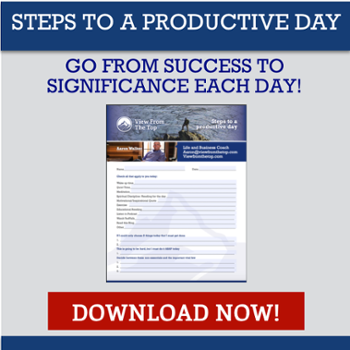If you are a dog owner (or even if you’ve ever played fetch with a dog) you’ve probably encountered a scenario in which you threw an object to have the dog run after, and on its way back the dog dropped what was in its mouth to investigate an interesting looking stick. Or, even when the dog is contentedly chomping away at a bone, dangle something else enticing and it will quickly drop the bone to study the new object.
Although we may not notice it in our day-to-day, humans often behave in this same fashion. Maybe you’re working on a report or a big project. It’s due on Friday, and you spend Monday, Tuesday, and Wednesday clearing the rest of your work off your plate. You tell yourself you’re doing this so you’ll concentrate harder and be able to crush it out of the park on Thursday and Friday. But then Thursday comes along and every time you’re about to get started you find one more loose end you want to tie up first. There’s a bill you want to pay before you forget, a phone call to a relative you should have called last month, an email from a new client prospect—before you know it, Thursday’s daylight is waning and you decide it’d be best to regroup and attack the thing bright and early on Friday.

Once Friday wraps up, even if you completed what you set out to do and the end result was outstanding, the process leading up to it was a form of shiny object syndrome. It can take on many other forms as well, but this example is common among entrepreneurs, employees, and even students. Although it doesn’t always take the shape of a glittering object, we are constantly exposed to it. Many times we begin to chase it without even realizing that our attention has shifted. This article from entrepreneur.com labels shiny object syndrome as the disease of distraction.
Distraction is a cunning and deceptive force. Always within arm’s length, whispering to you softly, trying to get you to lean in closer and reward it with your attention. Distraction can destroy your priority list, disrupt your flow state, and dismantle your daily routine.
In his book Deep Work, Cal Newport talks at length about the dangers of giving in to distraction. He describes the art of doing deep work, shows how to separate deep work from shallow work, and how to defy distraction’s beck and call. He also gives real-life examples of people who have mastered the art of deep work to accomplish tremendous feats.
One of distraction’s greatest weapons in today’s world is social media. Cal Newport warns against getting caught up in the ever-connectedness of social media without setting any boundaries regarding your usage of it, saying “If you use these tools enough, you’ll arrive at a state of burned-out, hyper-distracted connectivity.”
While he doesn’t necessarily say we all need to quit using social media completely, he does caution against letting it become the type of distraction that infiltrates our connection to the high-level objectives on which we should focus.
If you’re working towards something great, don’t let yourself be distracted by shallow tasks, alluring opportunities, or a shimmering in the distance. Let’s make a commitment to ignore the shiny objects that use tactics of distraction to catch our eye. Keep your nose to the ground and work hard on the thing you’ve chosen to do. If you’re intentional with your time, your hard work will pay off. Strive for significance, ignore the shiny object syndrome, and live on purpose!





